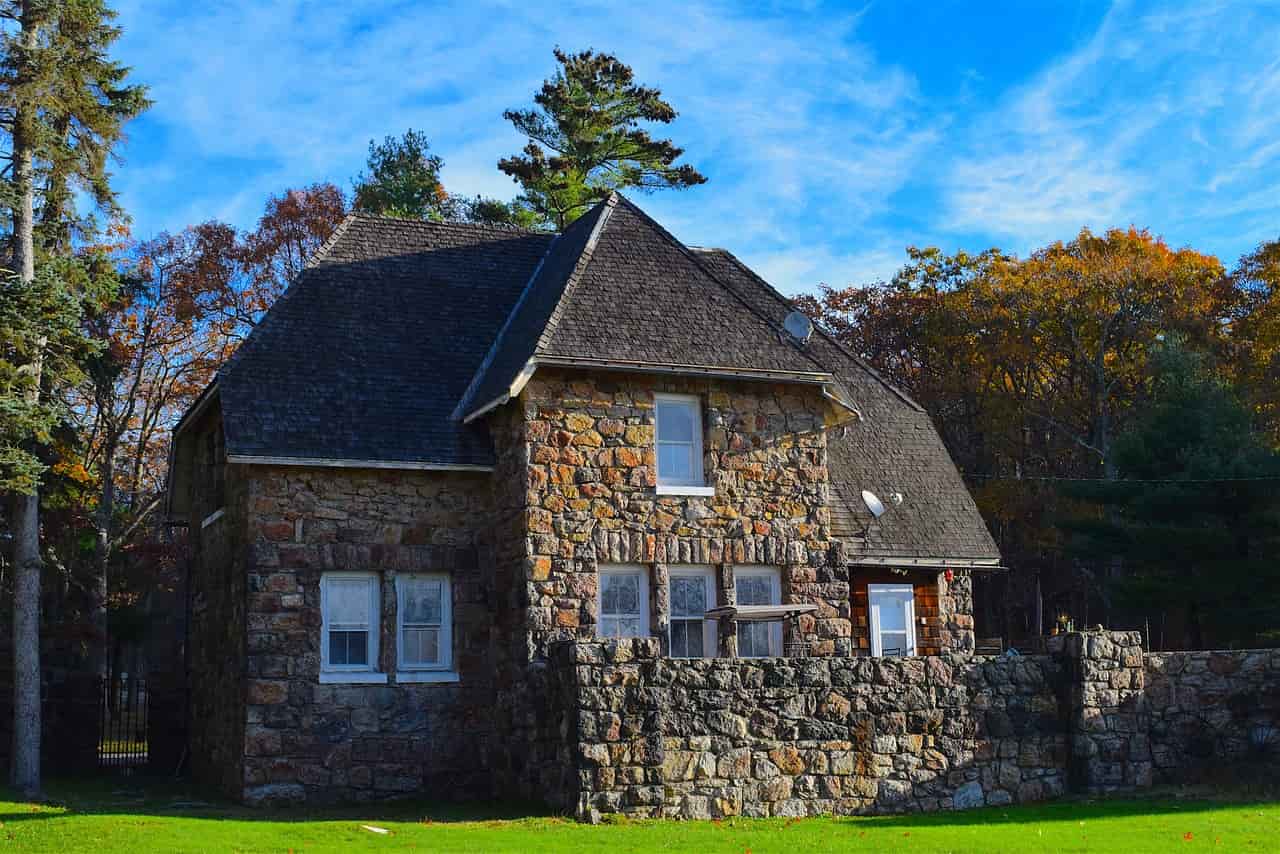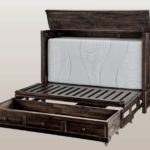Since there are numerous stone options, you can customize the exterior of your home to your particular preferences. Easy-to-obtain natural materials include granite and limestone, whereas concrete blocks and brick veneer are examples of manufactured materials.
To choose the ideal stone for your needs and budget, it is essential to be aware of the benefits and drawbacks of each type of stone. This article will discuss the various exterior home stone options accessible to you to assist you in making a choice that is aesthetically pleasing and consistent with the surrounding area. This topic discusses everything from practicality to upkeep to aesthetics. With this data, you may choose the stone to use in your home’s facade.
Contents
Types of exterior house stone
- The exterior masonry of your home can be given a unique look with minimal effort. Granite, sandstone, slate, and limestone are just a few examples of durable and aesthetically pleasing stones that find widespread application in buildings. Before settling on a particular stone, weighing its benefits and drawbacks is best.
- Stone is a material that is commonly used for facades. Affordable prices are offered for various hues, from light beige to deep black. Because it is solid and long-lasting, limestone may be used as a long-term weather barrier. Accents made of wood or masonry accentuate the inherent beauty of limestone.
- Granite can be used externally on buildings as well. Its longevity makes it a well-liked option for countertops and flooring. Granite color varies based on the quarry’s location; it might be light beige, deep blue, or crimson. The elements do not affect granite’s strength or beauty.
- The endurance and aesthetic appeal of a building can be enhanced by using sandstone, another kind of sedimentary rock. When combined with other building materials like brick or wood, the variety of colors found in sandstone—from light browns and greys to rich earth tones—creates eye-catching contrasts. Even though sandstone is weather- and weather-resistant, improper installation or maintenance will cause it to deteriorate rapidly.
- Slate is a stunning rock with a dark color and a polished surface. Slate is an advantageous building material in areas prone to severe weather because of its resilience in damp circumstances and ability to lessen daily temperature fluctuations. The wide range of colors in slate makes it a versatile material that architects may employ to significant effect. It has to do with how they manage to use various designs on the exterior without overpowering the spectator. Because of its versatility and capacity to take on many shapes, slate is a material many homeowners find appealing.
- External walls are typically constructed from natural stone, such as limestone, granite, sandstone, or slate. With many alternatives available, modern homeowners may add a personal touch to their houses while maintaining safety and security. The client’s preference, budget, and practicality should all be considered when choosing a stone for your project. Use the information below to help you decide on the ideal configuration.
Advantages and disadvantages of each type
- External house stones come in various forms, each with advantages and disadvantages. Despite low cost and little maintenance, brick can fade or break in cold areas. Despite their many colors and designs, pavers must be regularly sealed to avoid deterioration. Flagstone is inexpensive and waterproof, but it needs to be installed and trimmed carefully.
- Limestone’s porous structure makes it useful in numerous contexts. However, the material does occasionally necessitate extra attention. Slate provides some protection from the elements, but it fades quickly in sunlight and requires frequent maintenance. The technical qualities of a stone are important considerations for homeowners before deciding to install it.
Selecting the suitable stone for your home
Choosing a beautiful and durable external stone is crucial if you want your home to stand the test of time. Below is a list of places you can start your adventure.
Prioritize thinking about the weather and landscape. Depending on the weather, one masonry method may be preferable over another. Slate, for instance, can tolerate temperatures as high as 400 degrees Celsius very well, although limestone is more likely to shatter in cold weather. Do your homework to determine which type of stone is ideal for your area and climate.
Think about how you want the stone to contrast with other design aspects in your house or to stand out. Brick is a fantastic option if you want something more subdued that blends in with the surroundings, but flagstone is a terrific alternative if you want something that stands out owing to its unique color scheme.
Installation, maintenance, and replacement costs are just a few of the expenses that must be considered. Installation costs are determined by the size and intricacy of the project; granite installation may require a professional, but brick installation is usually doable by a homeowner with basic do-it-yourself skills. How frequently your stone needs to be cleaned or sealed will determine how much upkeep will cost. Flagstone needs to be washed with water and mild soap once in a while.
However, sandstone requires frequent maintenance due to its porous nature. It’s critical to evaluate replacement costs with differences in stone. Specific stone forms require less regular care than others; slate and brick require less frequent upkeep. The next step is to choose a stone type that enhances your house’s curb appeal and meets your budget. Look for nearby companies that offer stonework services for the exteriors of homes and obtain quotes for installation and maintenance. Your final work will appear suitable and require fewer revisions if these are followed.
Installation tips for exterior house stone
- Getting a qualified and skilled contractor is the first step in finishing the exterior stonework of a home. A properly trained and insured expert in control is crucial for a successful outcome. Before putting in your chosen stones, ensure everything is in the way. Therefore, there may be some delays.
- One must consider the stone’s response to variations in temperature and humidity while making a final decision. You can choose the ideal option for your area with the advice of an expert. Now, the system setup can begin. If you believe in your abilities, you can handle this task independently. Experts are the finest to hire since they can complete the job swiftly, safely, and by all regulations.
- After adequate planning and study, homeowners should hire specialists to ensure a successful external stone installation. If homeowners follow the guidelines, they may rest assured that their renovation will retain its beautiful appearance for years.
Maintenance tips for exterior house stone
- Stone on the exterior of a property can be challenging to maintain, but with these steps, it can continue to look fantastic for years to come.
- Maintain a regular cleaning routine as your top priority. At least once every few months, you should clean the stone with water and minimal detergent. It’s been proven that having a nice, clean place to call home can add years to your life expectancy. A gentler brush or specialized cleaning solution may be required for stubborn stains.
- Routine upkeep should include sealing the stones around your property. Seal the stone to protect it from external influences like rain and dirt. The sealant is suggested to be renewed as needed or at least once every few years.
- The stonework on the exterior of your home should be inspected for moss and lichen growth and restored if necessary. Some surfaces can be harmed if moisture levels aren’t controlled appropriately over time. Moss or lichen flourishing in the area is a good indicator of this. A professional moss remover should be applied to remedy this issue with granite or limestone used outside.
- Your top objectives should be taking care of anything significant to you and looking for any potential rolling rocks. To prevent further damage, loose stones must be removed quickly. Always be on the lookout for any threats and be ready to act quickly if necessary. Homeowners should follow these steps if they want their outside stone to retain its beautiful appearance and extended lifespan.
Conclusion: What types of exterior house stone is best?
Which stones, in the end, are the best for enhancing the exterior of a house? There are several aspects to consider while deciding on the best exterior house stone for your home. Cost, weather, and aesthetics are all factors to consider while selecting a stone. To ensure the stone retains its strength and beauty, it must be installed by a professional familiar with the best methods.
Brick isn’t usually the most feasible building material because of its vulnerability, particularly in colder places. Although watertight, homeowners should think twice before spending money on this material due to its high price and potential negative environmental consequences. Limestone’s adaptability is matched only by its porous nature and the occasional need for repair. Slate has an impressive resilience to weathering, but its black color fades quickly in the sun and requires frequent retouching.
Maintaining outdoor stone’s durability and aesthetic appeal requires frequent cleaning and sealing. Before choosing, homeowners should research each type of stone and discover which nearby businesses are experts at installing and caring for these stones. Readers choosing an external house stone for their property may make the most significant choice by considering each of these considerations.











1 thought on “What types of exterior house stone is best?”